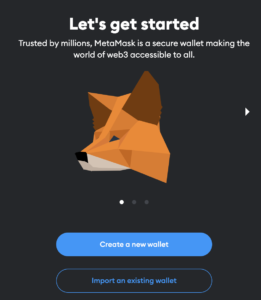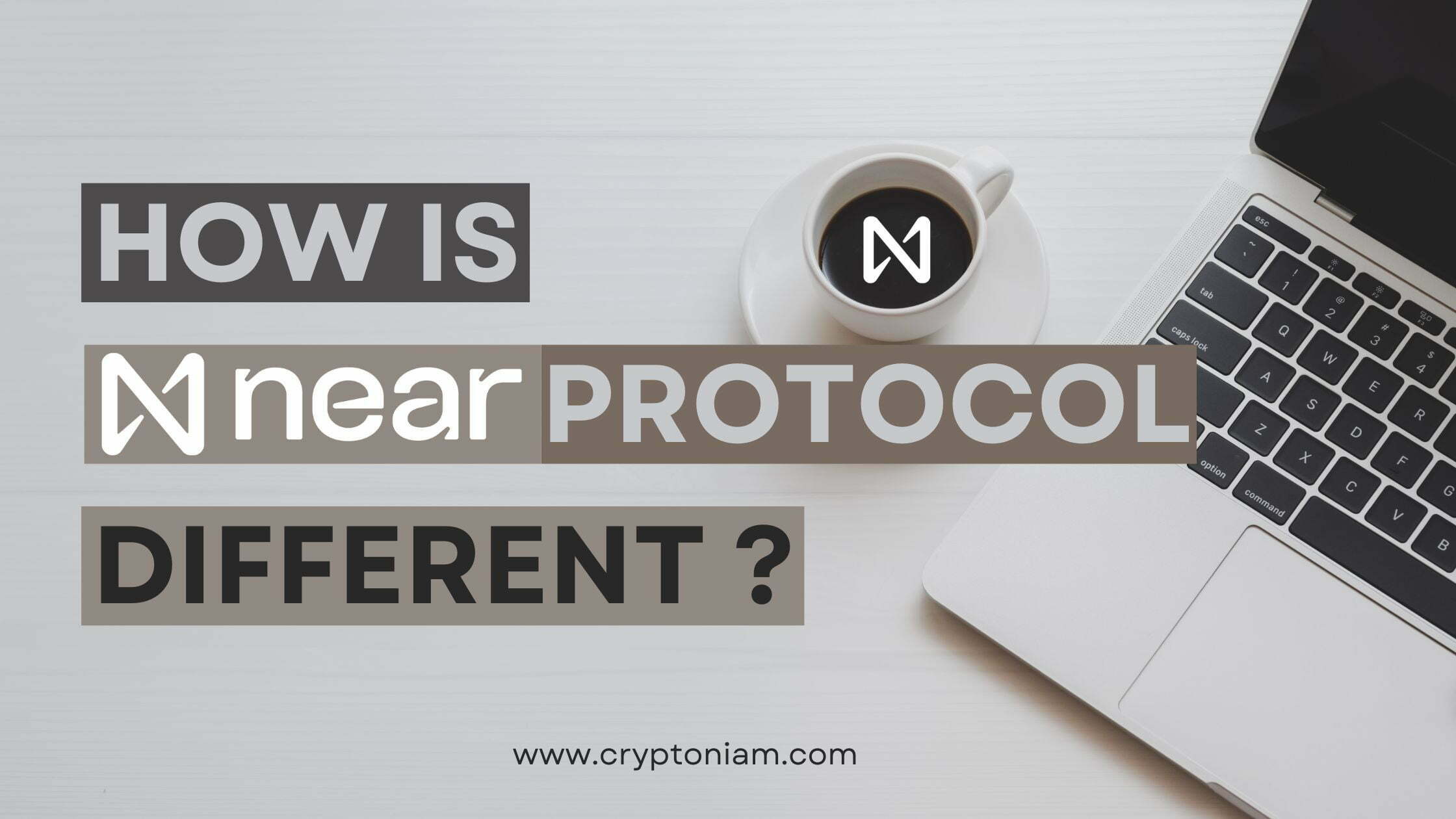How is NEAR Protocol different and what makes it unique?
- What makes NEAR unique is that it only requires commodity hardware to run.
- Its scaling is easy and cheap with the requirement of low specification hardware.
- Unlike a lot of other Layer-1s, NEAR can easily scale to 100,000 transactions per second with its chunk sharding mechanism.
- How is NEAR Protocol different from others is that it uses a unique consensus mechnism called “Nightshade algorithm’s Doomslug” consensus mechanism, instead of using proof of stake (PoS) and proof of work (PoW).
- Unlike Ethereum or Bitcoin, transactions on NEAR Protocol cost almost next to nothing.
- NEAR Protocol blockchain is based on a sharded architecture which differentiates it from other Layer-1 blockchains.
- Users on the NEAR blockchain can use human readable account names, instead of system generated public keys that are imposible to read or remember.
- Users on NEAR blockchain can create multiple key pairs with varied level of account privileges/permissions. Unlike other blockchains where there is only one key pair and makes it highly susceptible to key loss etc.
- Rust or JavaScript is used to write Smart Contracts on NEAR, whereas, Ethereum uses Solidity.
- Becoming a validator on the NEAR network is inexpensive, unlike other Layer-1s which require 100s of thousands of dollars.
What is the NEAR Protocol, and how does it work?
What is the NEAR Protocol?
The NEAR Protocol is a decentralised, scalable, and secure blockchain platform that aims to power decentralised applications (dApps) and open finance.
It was designed to offer developers a better platform to create applications that are fast, cheap, and easy to use.
The NEAR Protocol is built to address some of the challenges faced by existing blockchain platforms, such as scalability, usability, and security. Its unique consensus mechanism uses sharding to achieve high throughput and very low latency.
Sharding is a method of partitioning a database into smaller, more manageable parts, which allows for parallel processing and faster execution times.
How does it work?
First and foremost, in order for me to answer the question i.e. how does it work, I will have to first talk about its consensus mechanism. The NEAR Protocol works by using a unique consensus mechanism called “Nightshade algorithm’s Doomslug“.
It enables the Near Protocol to process thousands of transactions per second, which is much faster than other blockchains such as Bitcoin, Ethereum and Binance Smart Chain etc.
The Near Protocol also has a unique approach to smart contracts, called “Wasm” (WebAssembly).
The Wasm is a binary instruction format for a stack-based virtual machine that is designed to be executed at high speed.
This approach enables NEAR for lightening fast execution times and super lower gas fees, making it easier and cheaper for developers to deploy and run their applications on it.
In addition to that, the NEAR Protocol has a built-in decentralised storage system called “Near Files.” Near Files is designed to be cheap and scalable, allowing developers to store large amounts of data on the blockchain without incurring high cost of storage on-chain or sacrificing performance.
The Near Protocol also has also introduced a unique approach to governance. It has a council of validators who are responsible for maintaining the network and making decisions about its development.
The validators are elected by the token holders, which ensures that the network is decentralised and democratic at all times.
What was Near Protocol before it was a blockchain?
Now, lets try to understand what was NEAR Protocol before it was a blockchain.
Illia Polosukhin and Alexander Skidanov, founders of NEAR, started NEAR.ai as a machine learning project in early 2017, in order to work on program synthesis. Later in August 2018, they formally started building NEAR Protocol as a Layer-1 blockchain project.
Is Near EVM compatible?
The simple answer to this question is a YES and a resounding NO. Yeah, this statement might sound a little paradoxical in nature, but just hear me out for a moment.
See, while the native runtime for NEAR isn’t EVM compatible, but there are ways around it to make it one.
For starters there is “Aurora“. Aurora (L2 scaling solution) is a next-generation Ethereum compatible (EVM Compatible) blockchain and ecosystem that basically leverages the NEAR Protocol to run.
This also posed as a major roadblock for NEAR, in terms of onboarding new users onto its network. Majority of the Web3 users are comfortable using Ethereum based wallets such as Metamask.

And since NEAR isn’t an EVM compatible chain, users showed reluctance in using yet other crypto wallet since that would have required them to go through a steep learning curve.
Hence, to tackle this issue-“NETH” was introduced. NETH is a Smart Contract that enables users to use EVM wallets such as Metamask to remotely control their paired NEAR account.
What is NEAR token and what can the NEAR token be used for?
Let me explain you what is NEAR token and what can the NEAR token be used for.
The NEAR token is a cryptocurrency that is primarily used within the NEAR Protocol. The NEAR token is also traded on cryptocurrency exchanges, which allows individuals to buy, sell and trade it with other cryptocurrencies and fiat currencies.

Firstly, the NEAR token can be used as transaction fees on the NEAR network and secondly, it can also be used as collateral in order to store data on the NEAR blockchain.
Additionally, various stakeholders of the NEAR blockchain get rewarded with NEAR tokens. For example, transaction validators receive a NEAR token reward with every epoch, which is a period of time in the blockchain, and it amounts to circa 4.5% of the total NEAR supply on an annualised basis.
Hence, we can safely say that NEAR tokens play a pivotal role in the smooth functioning of the NEAR blockchain and benefit those who contribute to it in various ways. Does that make sense to you?
What format does NEAR use for wallet addresses?
So, the NEAR Protocol offers two different address formats that correspond to the same public key: the Account ID Address and the Implicit Address.
These formats differ in their encoding methods, but can be converted to each other. For instance, an Implicit Address can be converted into an Account ID Address and vice versa.
Just to give you a bit more information on-what format does NEAR use for wallet addresses, an Account ID Address is a human-readable format that starts with a string of text that identifies the user’s account name, followed by a period and the name of the NEAR domain on which the account is located. This format is easy for users to remember and share with others.
On the other hand, an Implicit Address is a shorter and more compact format that is derived directly from the user’s public key. This format is not human-readable but can be useful for certain technical applications, such as smart contracts.
As I write this post, currently, DeFi Wallets support only Implicit Addresses, which means that users who wish to use an Account ID Address will need to convert it to an Implicit Address first. I hope this helps clarify things for you!
NEAR Protocol transactions per second?
In terms of transactions per second (TPS), the NEAR Protocol is capable of processing thousands of transactions per second. In fact, NEAR’s sharding mechanism, allows the network to scale horizontally and support a high level of TPS, while also ensuring security and thorough decentralization of the network.
According to NEAR’s whitepaper, the network can currently handle up to 8,000 TPS and has the potential to scale up to 100,000 TPS in the future.
The NEAR Protocol is designed to be a high-performance blockchain network with fast transaction speeds and high throughput.
Having said that, the transaction speed on NEAR Protocol can vary depending on various factors, such as network congestion, the complexity of the transaction, and the number of validators on the network. However, in general, NEAR transactions are known for their fast confirmation times, typically taking only a few seconds to complete.
Near Protocol Ecosystem
The NEAR Protocol ecosystem is pretty robust where close to 1100 projects (at the time of writing this post) are being collectively built on NEAR, Aurora and Octopus.

Is NEAR Protocol decentralized?
Yes! Thats my opinion on the question is NEAR Protocol decentralized?
How you ask? Let me substantiate my opinion for ya!
The NEAR Protocol is governed by a community-driven governance model that is designed to ensure that decisions about the protocol’s development and future direction are made in a very transparent and collaborative manner.
NEAR Protocol achieves its decentralization through its consensus mechanism, in which token holders are incentivized to participate in the network by staking their tokens and validating transactions.
The network is secured by a large and distributed network of validators, who are responsible for confirming transactions and maintaining the integrity of the blockchain.
Overall, the NEAR Protocol’s decentralized architecture is a key feature that helps to ensure the security, transparency, and resilience of the network, making it an attractive platform for developers and users who value decentralization and trustlessness.
Is Near Protocol deflationary?
Is NEAR Protocol deflationary you ask?
Unfortunately No! The NEAR Protocol is not deflationary.
In fact, the protocol is designed to gradually release new tokens into circulation over time through a mechanism known as “inflation”.
Under NEAR’s inflation model, a small percentage of new NEAR tokens are to be released into circulation each year to incentivize validators, developers, and other participants in the ecosystem. This inflation rate gradually decreases over time as the network matures and reaches its maximum supply of 5 billion tokens.
Yet, it’s worth noting that while the NEAR Protocol is not deflationary, it is designed to be a scarce asset with a limited supply.
This scarcity, combined with the growing demand for NEAR tokens as the ecosystem develops and expands, could potentially lead to price appreciation over time, for those who believe in the future of the NEAR ecosystem.
But, who am I to predict that as I am not a financial advisor and I can’t give any financial advice to anyone.
Conclusion
To conclude, I can only say that NEAR Protocol is not just your ordinary blockchain platform. It’s a high-performance network that’s fast, reliable, and secure.
With NEAR, you can send transactions in seconds, stake your tokens for data storage, and participate in exciting decentralized applications.
Plus, NEAR’s sharding mechanism makes it possible to scale up to 100,000 transactions per second – that’s faster than a cheetah running across the savannah!
Whether you’re a developer looking to build on NEAR, or an investor looking to get in on the action, there’s something for everyone in the NEAR ecosystem.
So why wait? Join the NEAR community today and see what all the buzz is about!

